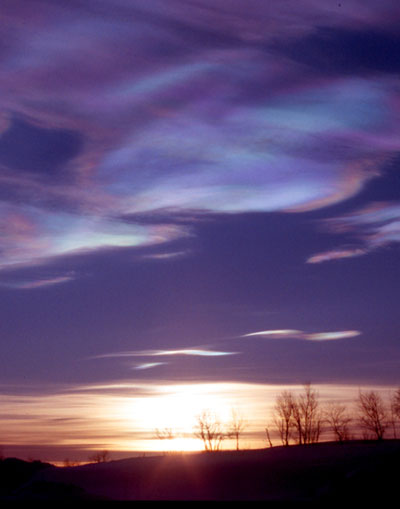Two Evils Compete: Global Warming vs. Ozone Hole

The evils of global warming and ozone depletion are competing problems, at least in Antarctica, the results of two new studies suggest. Schemes to pump sulfur into the atmosphere to counteract global warming might help cool the Earth, but they could also cause problems at the poles, scientists warned today. Continuous injections could drastically deplete polar ozone, delaying the recovery of the current ozone hole over Antarctica by several decades. And another study finds that if the southern ozone hole is patched, the heat would turn on in Antarctica. Injecting sulfur into the atmosphere is one of the most talked about "geoengineering" schemes aimed at counteracting the warming caused by the carbon dioxide building up in Earth's atmosphere, largely due to industry and vehicles emissions. Sulfur particles, along with some other aerosols, can have a cooling effect on Earth's surface because they scatter incoming sunlight back out to space. This effect can actually happen naturally when sulfur is spewed out in volcanic eruptions. After the 1991 Mt. Pinatubo eruption, which injected millions of tons of sulfur dioxide into the atmosphere, global temperatures dropped by about 1 degree Fahrenheit (0.5 degrees Celsius). Not so simple The artificial cooling idea proposed by Nobel laureate Paul Crutzen, among others, is to regularly inject large amounts of sulfate particles into the atmosphere to block the sun's rays and cool the Earth. Unfortunately, it's not that simple, a new study suggests. At very cold temperatures, sulfur particles provide a surface where chlorine gases in the atmosphere (from man-made chlorofluorocarbons, or CFCs, and other pollutants) can react and form molecules that destroy ozone. These cold temperatures can arise during polar winters, when sulfur helps form polar stratospheric clouds. Simone Tilmes of the National Center for Atmospheric Research and her team used computer models to examine the effect yearly sulfur injections would have on ozone levels at both of the planet's poles. The model showed that injecting sulfur in the amounts suggested by Crutzen and others would seriously impact Arctic and Antarctic ozone levels. Over the next few decades, these hypothetical injections would likely destroy between about one-fourth and three-fourths of the ozone layer above the Arctic. Because atmospheric circulation patterns over the Arctic tend to "wobble," this Arctic ozone hole even could sweep over populated areas, Tilmes said. Lower ozone levels allow the sun's harmful ultraviolet rays to pierce through the atmosphere, which can cause severe problems for life on Earth's surface, from skin cancer in humans to DNA damage in many types of plants and animals. Ozone wouldn't suffer the same depletion over Antarctica, "because it's already gone," Tilmes told LiveScience. But the sulfates would delay the expected recovery of the ozone hole by about 30 to 70 years, the model found. "Our research indicates that trying to artificially cool off the planet could have perilous side effects," Tilmes said. "While climate change is a major threat, more research is required before society attempts global geoengineering solutions." The results of the study, funded by the National Science Foundation, NASA and European funding agencies, are detailed in the April 25 issue of the journal Science. Another problem On the other hand, a full recovery of the ozone layer could lead to intensified warming over Antarctica, according to another new study, detailed in the April 26 issue of the journal Geophysical Research Letters. Because ozone absorbs ultraviolet radiation, it warms the surrounding air. More warming high in the atmosphere over the Antarctic could change atmospheric circulation patterns there that have so far kept the southern continent isolated from the warming patterns affecting the rest of the world. "If the successful control of ozone-depleting substances allows for a full recovery of the ozone hole over Antarctica, we may finally see the interior of Antarctica begin to warm with the rest of the world," said lead author of the study, Judith Perlwitz of the University of Colorado at Boulder and the National Oceanic and Atmospheric Administration (NOAA).
- Top 10 Craziest Environmental Ideas
- Timeline: The Frightening Future of Earth
- Top 10 Ways to Destroy Earth
Sign up for the Live Science daily newsletter now
Get the world’s most fascinating discoveries delivered straight to your inbox.

Andrea Thompson is an associate editor at Scientific American, where she covers sustainability, energy and the environment. Prior to that, she was a senior writer covering climate science at Climate Central and a reporter and editor at Live Science, where she primarily covered Earth science and the environment. She holds a graduate degree in science health and environmental reporting from New York University, as well as a bachelor of science and and masters of science in atmospheric chemistry from the Georgia Institute of Technology.









